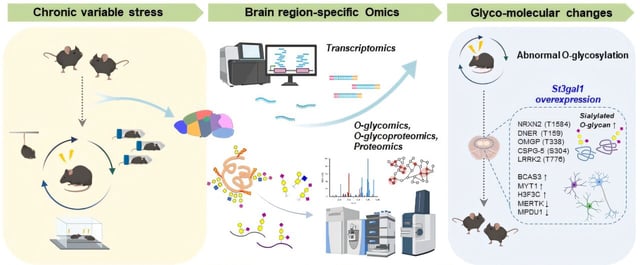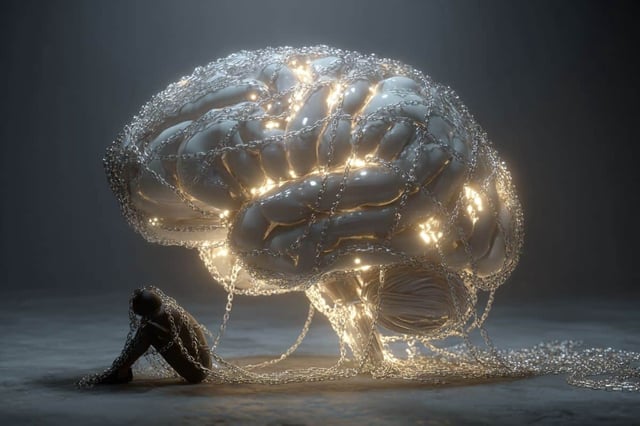Overview
- A multi-omics survey across nine brain regions found region-specific O-glycosylation changes with the strongest stress-induced drop in sialylation in the prefrontal cortex.
- Viral knockdown of the sialyltransferase St3gal1 in the medial prefrontal cortex induced anxiety-like behavior and anhedonia in unstressed mice, while restoring St3gal1 in stressed mice reduced those behaviors.
- Proteomic and electrophysiological analyses showed that reduced St3gal1 destabilizes glycosylation of synaptic proteins, including neurexin 2, and impairs inhibitory neuron function.
- The work maps a depression pathway beyond neurotransmitter signaling and is presented as a potential avenue for biomarker development and new therapeutic targets.
- The peer-reviewed study, led by the Institute for Basic Science and published October 3 in Science Advances, reports preclinical findings in male mice and has not been evaluated in humans.

